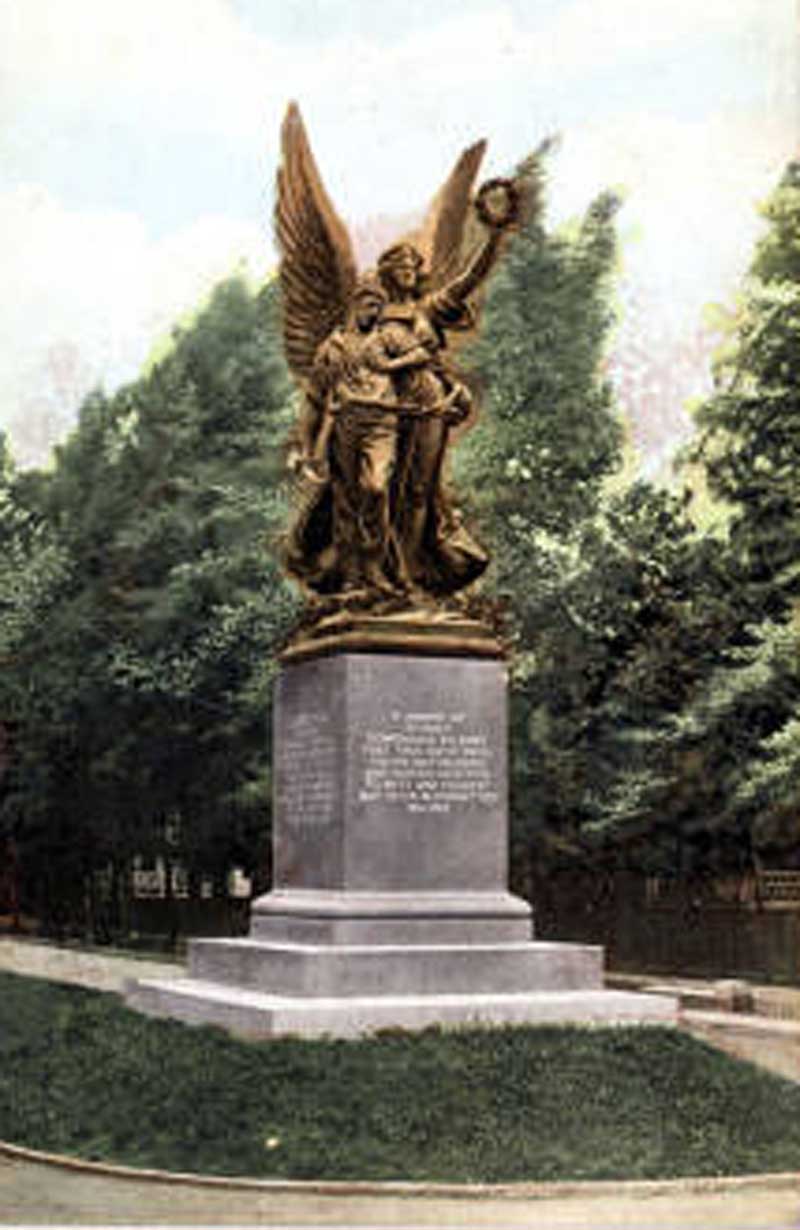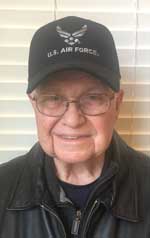
Between Fort Sumter and the Emancipation Proclamation
The beginning of the Civil War is usually counted as having commenced on April 12, 1861, when Confederate artillery batteries began the bombardment of Union held Fort Sumter in Charleston Bay. Union forces there surrendered on April 13, and President Lincoln called for 75,000 volunteers on April 15 to put down Confederate resistance to the Federal Government.
On July 16, Confederate forces under Brig. General P. G. T. Beauregard had positioned themselves behind Bull Run Creek just west of Centreville, Virginia, to defend the strategic railroad junction at Manassas. Twenty-five miles northeast of Manassas Junction in Washington, Union Brig. General Irvin McDowell was massing his troops to dislodge and defeat Beauregard’s Confederates.
On July 19, Representative John J. Crittenden of Kentucky introduced a resolution in the U.S. House assuring Southern and Border states and many concerned Northern citizens that the war was not being fought to interfere with States Rights or Southern institutions [slavery] but to “maintain the supremacy of the Constitution and to preserve the Union.” It was particularly critical for the Union war effort that the states of Kentucky, Missouri, and Maryland not secede. If Maryland had seceded, Washington would have been cut off from its loyalist Union States.
However, the armed clash of 35,000 Union and 32,000 Confederate troops at Bull Run Creek occurred only two days later on July 21. It went well for McDowell and his troops at first. Although he was only able to deploy 18,000 of his troops, they outnumbered the Confederates during the morning hours and were driving them back. Thereafter, however, the Confederate defenders were reinforced by rail by troops from the Shenandoah Valley commanded by General Joseph E. Johnston, bringing the Confederate deployment to 18,000. Johnston’s Shenandoah troops included a brigade of Virginians under Brig. General Thomas J. Jackson. Jackson was particularly instrumental in halting the Union advance and turning it into to a Union retreat and then rout. Henceforth Jackson was given the nickname, “Stonewall,” and his brigade was thence called the Stonewall Brigade.
Union casualties were 2,708 with 481 dead. Confederate casualties were 1,982 with 387 dead. It was the wholesale rout of Union troops back to Washington, however, that made Bull Run/Manassas such a stinging defeat for the Union. Confederate commanders, however, believed their troops were too exhausted, disorganized, and too little trained to risk following McDowell into Washington.
Crittenden’s House Resolution on Union War Aims passed July 22 by a vote of 119 to 2. It went to the Senate as the Crittenden-Johnson Resolution. The Senate sponsor was Senator Andrew Johnson of Tennessee, who later became Vice President and then President after Lincoln’s assassination.
On July 25, 1861, the Crittenden-Johnson Resolution also called the War Aims Resolution passed the Senate by a vote of 30 to 5. Here is the heart of it:
“Resolved…That this war is not being prosecuted upon our part in any spirit of oppression, not for any purpose of conquest or subjugation, nor purpose of overthrowing or interfering with the rights or established institutions of those states, but to defend the maintain the supremacy of the Constitution and all laws made in pursuance thereof and to preserve the Union, with all the dignity, equality and rights of the several States unimpaired; and that as soon as these objects are accomplished the war ought to cease.” [Italics for emphasis are mine.]
In other words, the Northern Congress stated in resolution that preserving the Union, and not interfering with the institution of slavery, was the purpose of the war.
Later, on August 22, 1861, Lincoln explained his thinking on the war to the abolitionist editor of the New York Tribune, Horace Greeley:
“My paramount object in this struggle is to save the Union, and it is not either to save or destroy slavery. If I could save the Union without freeing any slave, I would do it; and if I could save it by freeing some and leaving others alone I would also do that. What I do about slavery, and the colored race, I do because I believe it helps save the Union.”
By the end of December 1861, however, rising casualties and changes in public opinion and Union military thinking obviated the Crittenden-Johnson Resolution, and it was officially withdrawn.
On January 1, 1863, however, nearly two years into the War, Lincoln found it expedient to issue the Emancipation Proclamation. But contrary to its celebrated image, the Emancipation Proclamation did not actually free any slaves in any territory under Union control. It was done primarily as a war measure, a “military necessity” in the words of Lincoln. According to historian Lawanda Cox, Lincoln had decided to use a proclamation of emancipation for the secession states as an instrument of war by July 1862, following six major Union defeats near Richmond during the Seven Days battles between June 25 and July 1. Five days after the costly Union strategic victory at Antietam, near Sharpsburg, Maryland, on September 17, 1862, the bloodiest day of the War, Lincoln issued a preliminary Emancipation Proclamation on September 22 to become effective January 1, 1863.
Lincoln and his generals hoped that the Proclamation would encourage slave uprisings in the South, thus causing Confederate troops to be diverted to protect their homes. Both free and slave blacks were also an important source of Confederate Army support units—teamsters, construction workers, hospital aides, and many other logistical functions. Some were embedded in combat units, especially cavalry and artillery units and included some snipers. The overwhelming majority of the slaves, however, proved remarkably loyal to the families of their Southern masters, most of whom were away in the Confederate Army. Instigating civilian slave revolts is a questionable moral endeavor because of the high danger to women, children, and other non-combatants. Nevertheless, the proclamation was made as part of a doctrine of military necessity.
Another reason given for the Emancipation Proclamation was to keep the anti-slavery British from coming into the War on the side of the South. The British largely favored the South because of their common belief in low tariffs and free trade. In fact, Lincoln’s Chief Economist, Henry C. Carey, blamed the War on British free trade. British-American diplomacy was already tense. In November 1861, Britain came close to another war with the U.S. when a U.S Navy warship, the USS San Jacinto halted and boarded the RMS Trent to remove two Confederate diplomats headed to Britain and France. In a few weeks, the Lincoln Administration released the diplomats and disavowed responsibility for the incident. The British did not come into the War on the side of the South, but the British were not so stupid as to be fooled by the Emancipation ruse. The French held similar economic views on tariffs and free trade but took no action. Though the Proclamation had disappointing military results, and only made the British more skeptical of Northern intentions, it did please those radical abolitionists who did not seem to mind too much the hypocrisy of a document that did not free a single slave in Southern territory occupied by the Union Army. Most abolitionists, Horace Greeley included, embraced Lincoln’s doctrine of military necessity. After a period of discontent in the North and in the Union Army over the Proclamation, the abolition of slavery began to be used to bolster the moral purpose of the war. Ever since then it has been a prime propaganda tool justifying and glorifying the War as a just and noble cause.
President Woodrow Wilson, writing in History of the American People, explained perfectly the Union strategy glorifying the War as a crusade against slavery:
“It was necessary to put the South at a moral disadvantage by transforming the contest from a war waged against states fighting for their independence into a war waged against states fighting for the maintenance and extension of slavery.”
Famous British author Charles Dickens was keenly aware of the tariff issues that so burdened the South to the benefit of the North and observed of the Emancipation Proclamation:
“The Northern onslaught upon slavery is no more than a piece of specious humbug designed to conceal its desire for the economic control of the Southern states.”
After the War, New England lawyer and abolitionist Lysander Spooner, a critic of the Union Army’s violent means, lamented that more than a million lives were lost in the War and wrote:
“All these cries of having “abolished slavery,” of having “saved the country,” of having “preserved the Union,” of establishing “a government of consent,” and of “maintaining the national honor,” are all gross, shameless, transparent cheats—so transparent that they ought to deceive no one—when uttered as justifications for the war….”
Yet the counterfactual propaganda that the Civil War was a Union crusade to end slavery is held as a sacred dogma by most academic, media, cultural, and political leaders, and even many Southern church leaders. This politically correct fantasy is now increasingly used to promote bullying, destructive vandalism, and slanderous political agendas to crush the honor and heritage of millions of Southerners for the sake of ignorant virtue-signaling.









 Mike Scruggs is the author of two books: The Un-Civil War: Shattering the Historical Myths; and Lessons from the Vietnam War: Truths the Media Never Told You, and over 600 articles on military history, national security, intelligent design, genealogical genetics, immigration, current political affairs, Islam, and the Middle East.
Mike Scruggs is the author of two books: The Un-Civil War: Shattering the Historical Myths; and Lessons from the Vietnam War: Truths the Media Never Told You, and over 600 articles on military history, national security, intelligent design, genealogical genetics, immigration, current political affairs, Islam, and the Middle East. 


